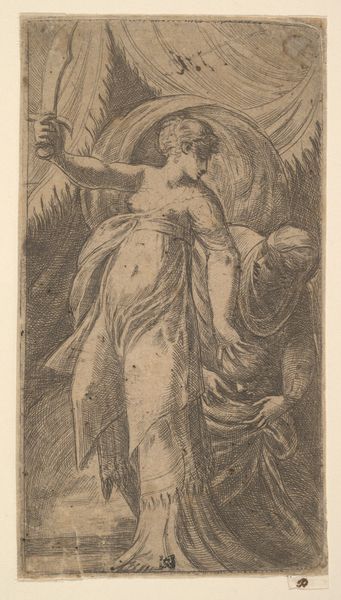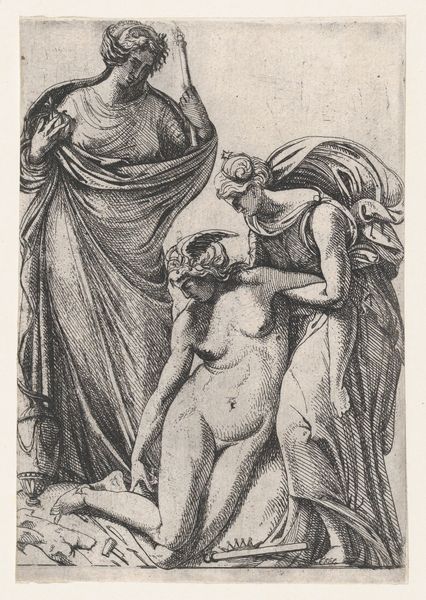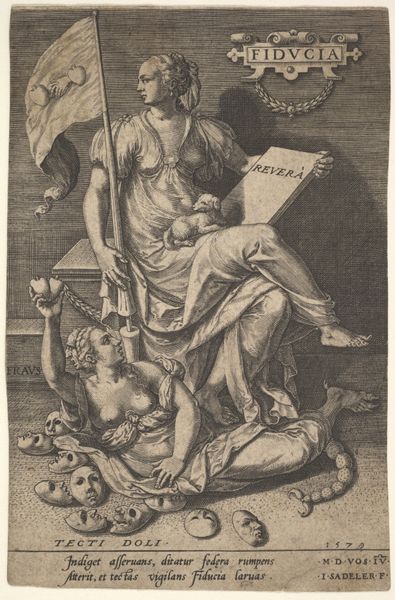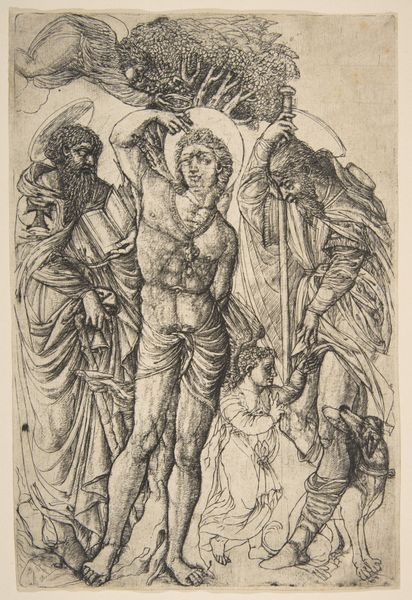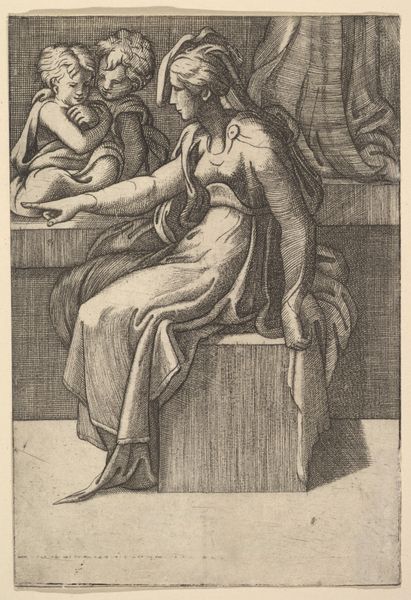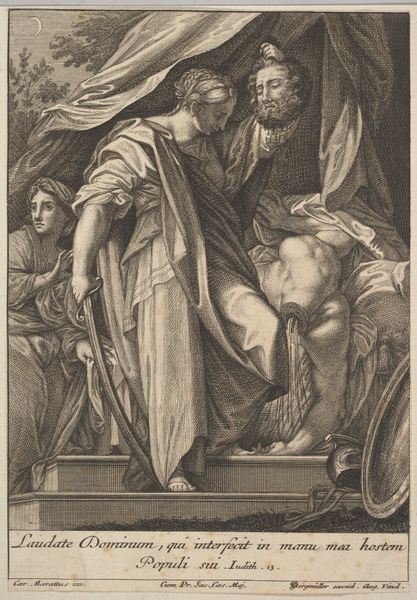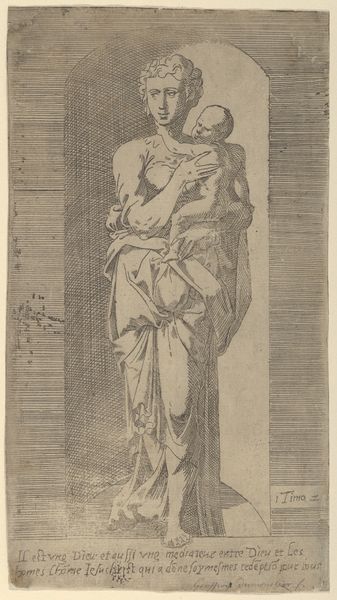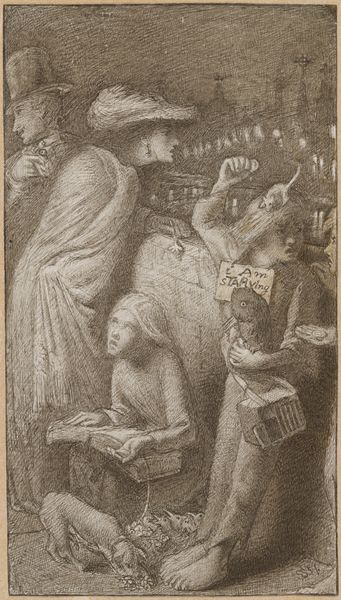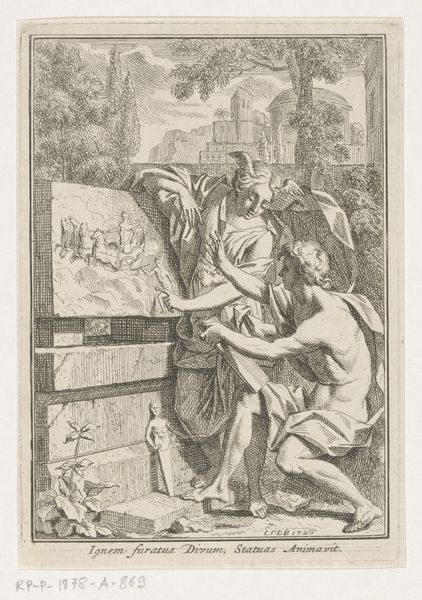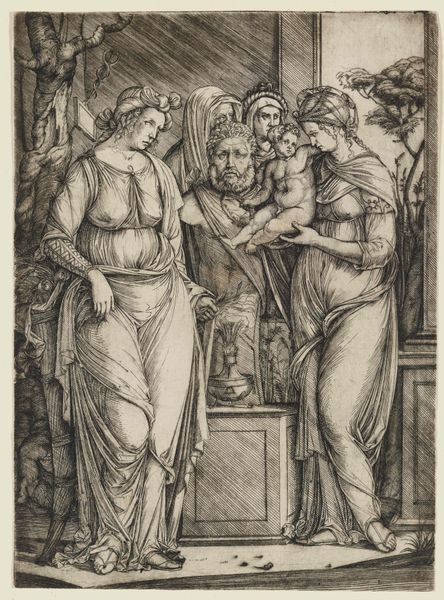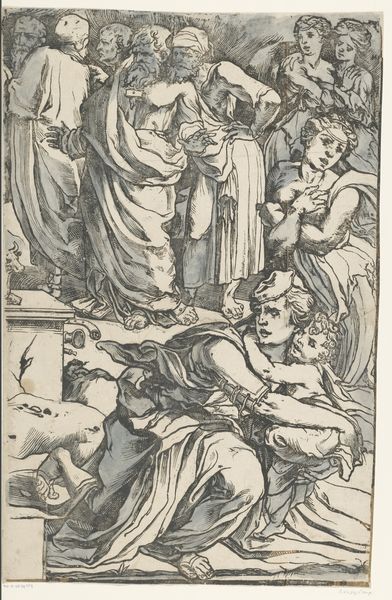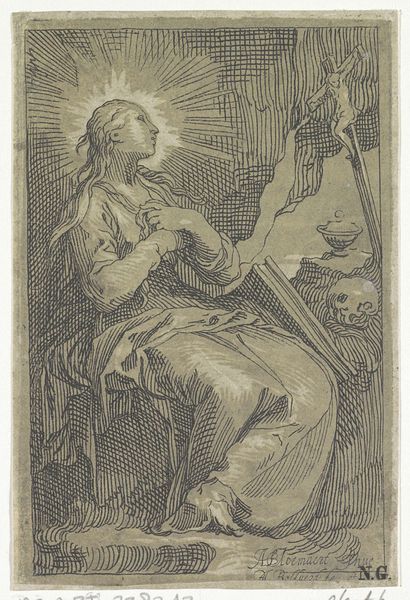
drawing, print, ink, pen, engraving
#
drawing
#
ink drawing
#
allegory
#
pen drawing
# print
#
figuration
#
ink
#
pen
#
history-painting
#
engraving
Dimensions: Sheet (trimmed): 6 5/16 × 4 1/4 in. (16 × 10.8 cm)
Copyright: Public Domain
Curator: I’m immediately struck by the density of line. It gives Pierre Biard II’s “Apollo and the Spirit of Sculpture” a surprisingly tactile quality for an engraving. What are your initial thoughts? Editor: My eye goes to the process here. Looking at how an artwork about making artworks gets made is an interesting dynamic. This engraving would've been something to own or show off, not worship in public like the sculptures. Curator: A fascinating point about ownership. The print itself utilizes a crisp, controlled line to define forms. Note the musculature of Apollo, the delicate drapery, and the refined facial features. The engraving creates a sophisticated composition, wouldn’t you agree? Editor: Agreed. Although it speaks volumes to who controlled art production. The classical themes serve those in power, especially during the late Renaissance. Apollo as an aesthetic ideal enforced a certain type of beauty while conveniently reinforcing class distinctions. Curator: True, the allegorical figures promote certain cultural values. The organization and interplay of figures – Apollo, the sculpture itself, the Spirit of Sculpture— create a cohesive and unified symbolic framework that communicates that visual language of power. The materials chosen – the very medium of print, elevates the ideas circulating within this period. Editor: It’s telling that Apollo has his hands firmly on that smaller sculptural form, exerting ownership through both material creation and its dissemination via prints. The contrast is palpable and quite on the nose: powerful men shape aesthetics. Curator: The artist creates depth through varied line weight. Shadow and form become interwoven within the symbolic elements – instruments related to sculptural production are displayed so vividly. This imbues the image with narrative depth. Editor: I’m drawn to how the materials affect access. It creates an intimacy that the stone originals likely lacked. Those sculptures stood grand, imposing… while this engraving, reproduced many times over, circulated within specific educated and affluent circles. Curator: I see it also. By restricting or providing that accessibility through media, they also create prestige. A fascinating example of image-making, for sure. Editor: It certainly prompts me to consider both the artistry and political dimensions embedded in art and craft. It feels deeply relevant for how we approach historical narratives today.
Comments
No comments
Be the first to comment and join the conversation on the ultimate creative platform.
